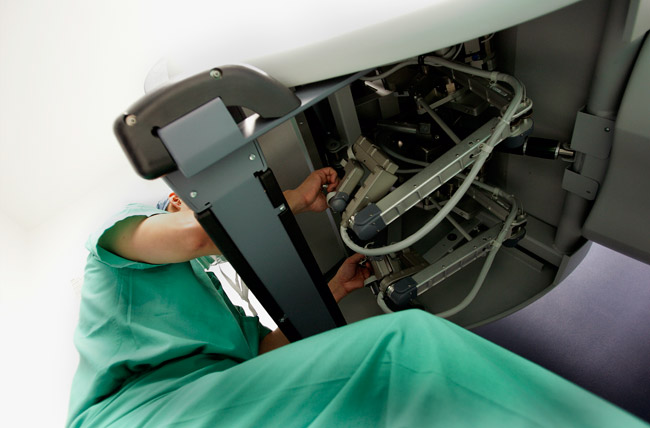
If you are in need of surgery, you may be able to receive treatment using a minimally-invasive technique using a robot. In robotic-assisted surgery, the surgeon uses instruments and cameras inserted through small incisions in your body. The surgeon sits at a console next to you and the robotic system imitates the movements the surgeon is making.
Robotic surgery can treat complex cases with improved precision and increased control than open surgery (larger incision). Benefits may include shorter hospital stay, less blood loss, faster recovery time and a quicker return to home.
Many physicians and patients from around the world refer or come to Penn Medicine for our expertise in robotic-assisted surgery. Our surgeons perform more and a broader range of procedures than most around the world.
Penn Medicine is one of the largest and most advanced robotic surgical training centers. We developed the world's first TransOral Robotic Surgery (TORS) Program in 2004 and train other surgeons to use the system.
Types of Robotic-Assisted Minimally Invasive Procedures
Robotic surgery procedures performed at Penn Medicine include:
- Removal of all or a portion of the kidney
- Removal of the adrenal gland that sits above the kidney
- Removal of all or a portion of the bladder
- Urinary diversion
- Removal of abdominal lymph nodes to treat testicular cancer
- Minimally-invasive spinal access for lumbosacral disc repair and spinal fusion
- Surgical removal of all or part of the prostate gland
- Transoral robotic surgery (TORS) for mouth and throat surgery
- Bariatric surgery or weight loss surgery
- Cardiac valve repair
- Gynecologic procedures
Robotic Heart Surgery in detail
Minimally Invasive Urologic Surgery Program in detail